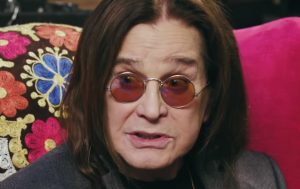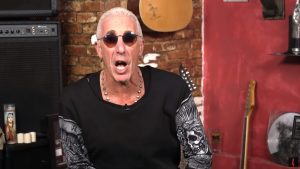The Reason Authorities Censored A John Lennon Album

via @johnlennon / X
The Beatles had their share of controversies long before John Lennon ever embarked on his solo career. From his infamous comment about the Beatles being “more popular than Jesus” to the ongoing speculation about drug references in their music, the band often found itself at odds with conservative elements of society. Even as their fame soared, the scrutiny and backlash never fully faded.
When Lennon went solo, however, his boldness only intensified. His third solo album with Yoko Ono, Some Time in New York City, was a sharp turn into raw political activism, both musically and visually. It was this unfiltered approach that eventually led authorities and retailers to censor one of his most provocative artistic choices.
The censorship wasn’t just about music; it touched on broader tensions between freedom of expression and political sensitivity during the Cold War. Lennon’s outspokenness made him a constant target, and the reaction to this album showed just how far some were willing to go to silence him.
View this post on Instagram
The Cover That Sparked Controversy
Unlike earlier Beatles albums, Some Time in New York City was never designed to be palatable for the masses. The cover artwork, created by Yoko Ono, featured a bold and surreal image: Chairman Mao and President Richard Nixon dancing together naked. For Lennon and Ono, it was an artistic statement about power, hypocrisy, and the absurdities of global politics.
Retailers, however, didn’t see it as a clever critique. Many stores, wary of backlash from conservative customers and possibly from governmental pressure, chose to place a gold sticker over the offending artwork. Lennon expressed deep frustration over this, noting how the sticker was impossible to remove without damaging the album itself—a deliberate and permanent form of censorship.
For Lennon, this act wasn’t just about covering up nudity; it was a symptom of a larger issue. He and Yoko were being routinely targeted, both publicly and privately, for daring to challenge societal norms and criticize authority through their art. The album cover was simply the latest casualty in their ongoing struggle for self-expression.
The Political Climate Behind the Censorship
The early 1970s were a tense time politically, with Cold War anxieties running high and governments on edge about anything that could be interpreted as subversive. In such a climate, an album cover featuring two world leaders naked—and dancing, no less—was seen not as harmless satire but as a potential spark for controversy that could ripple internationally.
Authorities and retailers alike likely feared the repercussions of allowing such imagery to spread unchecked. Lennon’s status as a former Beatle gave him immense global influence, and there was concern that anything he put out could shape public opinion in dangerous ways. Covering up the artwork was a preemptive move to avoid stoking diplomatic tensions or public outrage.
It’s ironic, considering how tame the artwork seems by today’s standards, that it was considered so incendiary at the time. Yet for Lennon and Ono, it was a reminder that in matters of politics and power, even the most creative forms of protest could be deemed too dangerous to exist freely.
View this post on Instagram
Lennon’s Long History With Censorship
This wasn’t the first time Lennon’s work had been censored, nor would it be the last. Even during the Beatles’ reign, controversy over album covers and lyrical content was common. Lennon himself pointed out the earlier example of Yesterday and Today, where the original “butcher cover” featuring the Beatles in butcher smocks with doll parts and meat had to be withdrawn and replaced after public backlash.
For Lennon, censorship became part of the terrain he had to navigate as an artist who refused to play it safe. The censorship of Some Time in New York City wasn’t just an isolated incident; it was part of a broader pattern of resistance he faced from institutions determined to preserve the status quo.
Despite the challenges, Lennon remained undeterred. His willingness to confront uncomfortable topics, even at personal and professional cost, cemented his legacy as not just a musical icon but a fearless advocate for artistic freedom. And though the gold stickers covered the album’s artwork, they couldn’t cover the message Lennon and Ono were determined to share with the world.












